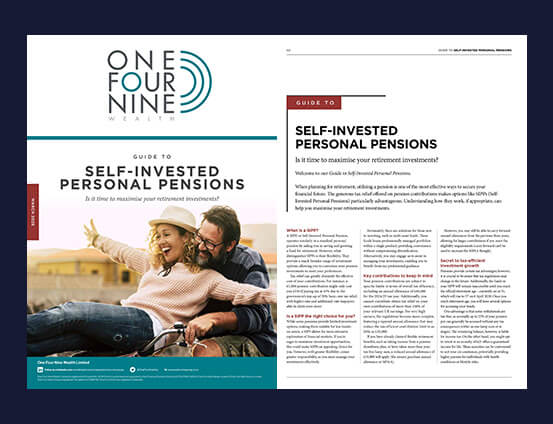One Four Nine Wealth – Guide to Self-Invested Personal Pensions
Is it time to maximise your retirement investments?
When planning for retirement, utilising a pension is one of the most effective ways to secure your financial future. The generous tax relief offered on pension contributions makes options like SIPPs (Self-Invested Personal Pensions) particularly advantageous. Understanding how they work, if appropriate, can help you maximise your retirement investments.

What Is a SIPP?
A SIPP, operates similarly to a standard personal pension by aiding you in saving and growing a fund for retirement. However, what distinguishes SIPPs is their flexibility. They provide a much broader range of investment options, allowing you to customise your pension investments to meet your preferences.
Tax relief can greatly diminish the effective cost of your contributions. For instance, a £1,000 pension contribution might only cost you £550 if paying tax at 45% due to the government’s top-up of 20% basic-rate tax relief, with higher-rate and additional-rate taxpayers able to claim even more.
Is a SIPP the right choice for you?
While some pensions provide limited investment options, making them suitable for less hands-on savers, a SIPP allows for more extensive exploration of financial markets. If you’re eager to maximise investment opportunities, this could make SIPPs an appealing choice for you. However, with greater flexibility comes greater responsibility, as you must manage your investments effectively.
Fortunately, there are solutions for those new to investing, such as multi-asset funds. These funds house professionally managed portfolios within a single product, providing convenience without compromising diversification. Alternatively, you may engage us to assist in managing your investments, enabling you to benefit from our professional guidance.
Read our Guide to Self-Invested Personal Pensions below
The value of pensions and the income they produce can fall as well as rise. You may get back less than you invested.










